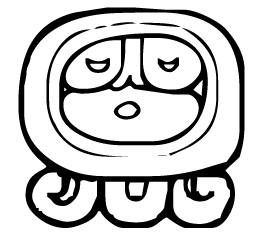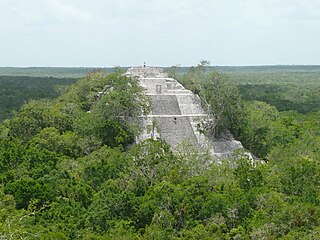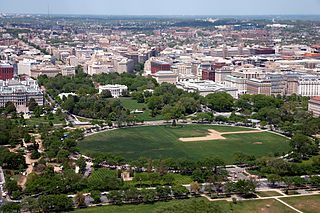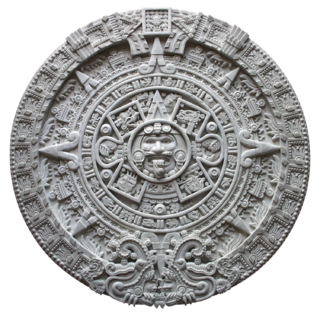Janahb Pakal also known as Janaab Pakal, Pakal I or Pakal the Elder,, was a nobleman and possible ajaw of the Maya city-state of Palenque.

Jasaw Chan K'awiil I also known as Ruler A, Ah Cacao and Sky Rain,, was an ajaw of the Maya city of Tikal. He took the throne on May 3, 682 and reigned until his death.

La Corona is the name given by archaeologists to an ancient Maya court residence in Guatemala's Petén department that was discovered in 1996, and later identified as the long-sought "Site Q", the source of a long series of unprovenanced limestone reliefs of exceptional artistic quality. The site's Classical name appears to have been Sak-Nikte' ('White-Flower').

Chak Tok Ich'aak I also known as Great Paw, Great Jaguar Paw, and Toh Chak Ich'ak was an ajaw of the Maya city of Tikal. He took the throne on August 7, 360? and reigned until his death in 378, apparently at the hands of invaders from central Mexico.

Yax Nuun Ahiin II also known as Ruler C and Chitam,, was an ajaw of the Maya city of Tikal. He took the throne on December 25, 768 and reigning probably until his death. He was son of Yik'in Chan K'awiil and brother of 28th Ruler. The monuments associated with Yax Nuun Ahiin II are: Stelae 19, 21 and Altars 6 and 10.

Yo'nal Ahk III, also known as Ruler 5, was an ajaw of Piedras Negras, an ancient Maya settlement in Guatemala. He ruled during the Late Classic Period, from 758 to 767 AD. Yo'nal Ahk III ascended to the throne upon the death of Itzam K'an Ahk II, who may have been Yo'nal Ahk's father. He was succeeded by his probable brother, Ha' K'in Xook in around 767 AD. Yo'nal Ahk III left behind two surviving stelae at Piedras Negras, namely Stelae 14 and 16, the former of which has been called one of the finest niche stelae, according to Simon Martin and Nikolai Grube.

K'an II was a Maya ruler of Caracol. He reigned AD 618–658.

Tuun Kʻabʻ Hix was a Maya king of the Kaan Kingdom.

Ix Ekʻ Naah, also known as the Snake Lady of Palenque, was a Maya queen of the Kaan kingdom in Campeche. She was a daughter of Lady Bʻakabʻ, wife of the King Tuun K'ab' Hix and had a daughter who married one lord, Prince of La Corona.

Yax Yopaat was a Maya king of the Kaan kingdom (Calakmul) who ruled AD 572-579.

Scroll Serpent was a Maya ruler of the Kaan kingdom. He ruled from AD 579 to 611. He acceded on September 2.
Yuknoom Ti' Chan was a king of Maya Kaan kingdom. He ruled >619>.

Tajoom Ukʻab Kʻahk' was a Maya ruler of the Kaan kingdom. He became a king on March 28, 622.

Yuknoom Head was a king of the Maya Kaan Kingdom. He ruled AD 630-636.
Yuknoom Ch'een II', known as Yuknoom the Great, was a Mayan ruler of the Kaan kingdom, which had its capital at Calakmul during the Classic Period of Mesoamerican chronology.

Yuknoom Yich'aak K'ahk' ) or Yuknoom Ixquiac was a Maya king of the Kaan kingdom, which had its capital at Calakmul during the Classic Period of Mesoamerican chronology.

Yuknoom Took' Kʻawiil was a Maya ruler of the Kaan kingdom (Calakmul).

Dzibanche is an archaeological site of the ancient Maya civilization located in southern Quintana Roo, in the Yucatan Peninsula of southeastern Mexico. Dzibanche was a major Maya city and investigations in the first decade of the 21st century indicate that it was the early capital of the Kan dynasty, which later ruled from the great city of Calakmul. Dzibanche features the earliest known use of the Kaan dynasty emblem glyph.
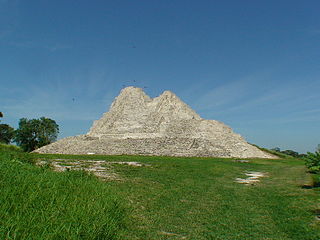
Moral-Reforma is a Maya archaeological site in Mexico, about 70 miles (113 km) northeast of Palenque.


